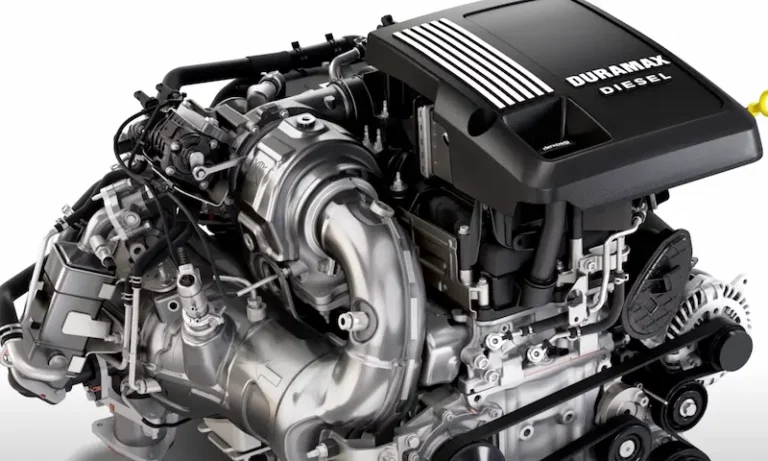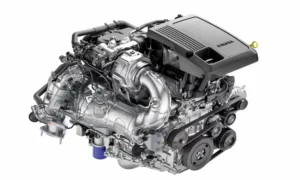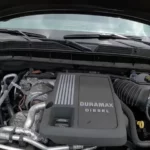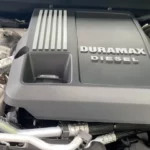Ever hit the gas pedal in your Duramax diesel truck only to feel… nothing? Then you glance at your dashboard and see those dreaded words: “Engine Power Reduced.” Your truck’s suddenly running like it’s dragging an invisible anchor, struggling to get past 45 mph, and you’re wondering what went wrong.
This isn’t just frustrating—it can leave you stranded when you need your truck’s power most. The good news? Most Duramax power reduction issues have clear causes and solutions.
What Is Duramax Reduced Engine Power Mode?
Reduced engine power mode (often called “limp mode”) is a protective feature built into all Duramax engines from the 2001 LB7 through today’s L5P models. When the Engine Control Module (ECM) detects a potential issue that could damage your engine, it deliberately limits performance to prevent catastrophic damage.
When this happens, your truck isn’t broken—it’s actually protecting itself. The system cuts fuel delivery, limits boost pressure, often locks the transmission in 3rd or 4th gear, and caps engine RPMs around 2,500. This explains why your truck suddenly feels like it’s running on half its cylinders.
According to diagnostic statistics, fuel system problems cause about 85% of all Duramax reduced power incidents, followed by sensor malfunctions and turbocharger issues.
Key Symptoms of Reduced Engine Power Mode
How do you know you’re in reduced power mode beyond the dashboard warning? Look for these telltale signs:
- Truck won’t shift past 3rd or 4th gear
- Engine RPMs limited to around 2,500
- Minimal turbocharger boost response
- Delayed or unresponsive throttle input
- Dashboard warning showing “ENGINE POWER IS REDUCED”
- Inability to maintain highway speeds (usually maxed at 45-50 mph)
- Poor acceleration, especially under load
Common Causes by Duramax Generation
Different Duramax generations have their own typical failure points that trigger reduced power mode. Let’s break them down:
LB7 (2001-2004): The Original Duramax
The LB7 might be the granddaddy of Duramax engines, but it has some specific weak points:
- Failing fuel injectors: The LB7’s most notorious issue, leading to poor combustion and reduced power
- Low fuel rail pressure (P0087): Often from worn CP3 injection pumps
- Fuel system contamination: Compromises the entire fuel delivery system
While the LB7 lacks the complex emissions systems of later models, those injector problems can be expensive, often requiring complete replacement of all eight injectors for proper system balance.
LLY (2004.5-2005.5): The First VGT Turbo
The LLY introduced the variable geometry turbocharger (VGT), creating new points of failure:
- Turbo vane actuator malfunctions: Often triggering codes P003A and P0046
- Vane position sensor failures: Causing erratic boost behavior
- Overheating issues: From the LLY’s somewhat inadequate cooling system
The LLY uses the largest turbocharger of any Duramax, providing excellent power potential but also increased complexity when things go wrong.
LBZ (2006-2007.5): The Most Reliable Generation
Many consider the LBZ the sweet spot for reliability, but it still has common issues:
- Fuel Rail Pressure Relief Valve (FPRV) problems: Often causing P0087 codes
- MAP sensor issues: Showing codes P0101 and P0106, typically from EGR contamination
The FPRV may open prematurely, bleeding off fuel pressure and triggering limp mode. Many owners install a “race plug” to block the FPRV and maintain consistent fuel pressure.
LMM (2007.5-2010): DPF Introduction
The LMM marked the beginning of modern emissions systems with the Diesel Particulate Filter (DPF):
- Incomplete DPF regeneration cycles: Leading to clogged filters and reduced power
- Excessive exhaust backpressure: From partially blocked DPF systems
- Turbo actuator failures: Similar to LBZ models
- Fuel pressure issues: Continuing the P0087 trend of earlier models
The DPF added a whole new dimension to reduced power issues, as regeneration problems could trigger limp mode to protect the emissions system.
LML (2011-2016): CP4 Pump Concerns
The LML’s biggest weakness is its fuel system:
- CP4.2 injection pump failures: Often catastrophic and contaminating the entire fuel system
- DEF system malfunctions: Adding codes like P207F and P20EE
- SCR catalyst efficiency issues: Affecting emissions performance
When CP4 pumps fail, they typically damage the injectors too, creating expensive repair scenarios. Many LML owners proactively convert to CP3 pumps or install lift pumps for protection.
L5P (2017-Present): Modern but Complex
The L5P is the most powerful factory Duramax, but it has its own challenges:
- MAP sensor clogging: The primary L5P issue, with EGR soot contamination causing significant power loss
- Turbo actuator failures: Still common with codes P003A and P0046
- Advanced emissions system complexity: Creating more potential failure points
MAP sensor contamination can rob substantial power even before setting check engine lights, making it a maintenance priority for L5P owners.
How to Diagnose Reduced Engine Power Issues
When your Duramax enters reduced power mode, follow these diagnostic steps:
Step 1: Read the Codes
Start by scanning for trouble codes using an OBD2 scanner. For Duramax engines, you’ll want something more capable than basic code readers—tools like the Edge CTS3 or similar diesel-specific scanners provide more detailed information.
Key codes to watch for:
- P0087: Fuel Rail Pressure Too Low (most common Duramax code)
- P0101/P0106: MAP/MAF Sensor Issues (especially on L5P)
- P003A/P0046: Turbo Actuator Problems
- P207F/P20EE: DEF System Issues (LML and L5P)
Step 2: Check Fuel System Components
Since fuel system problems account for the vast majority of reduced power incidents, check:
- Fuel filter condition: Replace if dirty or showing signs of water contamination
- Fuel rail pressure: Compare actual vs. desired pressure with a scanner
- Injection pump operation: Look for unusual noise or long cranking times
- Fuel quality: Poor-quality diesel can cause multiple issues
For LML owners especially, check your fuel filter for metal contamination—a telltale sign of CP4 pump failure.
Step 3: Inspect Sensor Systems
For L5P engines especially, check your MAP sensor for contamination. Even mild contamination can cause significant power loss. Other sensor checks include:
- MAF sensor cleaning: Contaminated sensors give incorrect airflow readings
- Turbo vane actuator testing: Check proper operation and resistance values
- Emissions system sensors: NOx sensors, temperature sensors, and pressure sensors
Fixing Duramax Reduced Engine Power: The Fuel System
Since most reduced power issues stem from fuel system problems, let’s start there:
Addressing Low Rail Pressure (P0087)
When you see the dreaded P0087 code, follow this approach:
- Replace the fuel filter first: Use quality filters like Baldwin, Donaldson, or Racor
- Inspect the fuel pressure relief valve (FPRV): Common on LBZ through LML engines
- Check injection pump performance: Particularly the CP3 (LB7-LMM) or CP4 (LML)
Many owners install “race plugs” to block the FPRV permanently, though this requires careful consideration of system pressures. This modification helps maintain consistent rail pressure under load.
Injection Pump Issues
The injection pump is the heart of your Duramax fuel system:
- CP3 pumps (LB7-LMM) typically wear gradually, giving warning signs before failure
- CP4 pumps (LML) tend to fail catastrophically, often without warning
Warning signs include extended cranking times, pressure drops under load, and metallic contamination in fuel filters. Many LML owners proactively convert to CP3 pumps for reliability.
The Lift Pump Solution
Installing an aftermarket lift pump provides several benefits:
- Improved filtration before fuel reaches the high-pressure pump
- Consistent low-pressure fuel supply
- Reduced injection pump wear
- Better performance under load
Popular brands include FASS, AirDog, and BD Diesel. While installation requires some work (typically fuel tank modifications and electrical connections), many owners consider this essential preventative maintenance.
Turbocharger System Repairs
Turbocharger issues are the second most common cause of reduced engine power in Duramax trucks.
Diagnosing VGT Problems
When dealing with variable geometry turbo issues:
- Test actuator resistance: Should be approximately 3.4-5.0 ohms
- Verify vane movement by hand: With the engine off and cool
- Check position sensor operation: Using a scan tool to compare commanded vs. actual positions
Failed actuators often show open circuits or incorrect resistance readings. Position sensor problems commonly cause codes P003A and P2599.
Replacing Turbo Actuators
Dealer actuator replacement typically costs $700-900, though remanufactured units offer significant savings. The process involves:
- Removing the actuator lever
- Disconnecting electrical connections
- Unbolting the actuator assembly
- Installing the replacement unit
- Calibrating the new actuator with a scan tool
To prevent future actuator failures, maintain regular operation at highway speeds, use quality diesel fuel and additives, avoid excessive idling, and perform regular maintenance.
Sensor and Air Intake Solutions
L5P MAP Sensor Issues
For L5P owners, MAP sensor clogging represents the most common issue:
- EGR soot contaminates the sensor
- Power loss occurs even before check engine lights appear
- Symptoms include reduced acceleration and poor throttle response
The fix involves cleaning the MAP sensor:
- Carefully remove the sensor using appropriate tools
- Clean thoroughly with brake cleaner or throttle body cleaner
- Reinstall properly
Many owners perform this maintenance every oil change as preventive care. Aftermarket MAP sensor spacers from companies like S&B help prevent future contamination.
MAF Sensor Problems
Mass airflow sensor issues affect multiple Duramax generations, often causing code P0101:
- Contaminated sensors provide incorrect airflow readings
- Improper fuel delivery results
- Power is reduced as a protective measure
Solutions include sensor cleaning with appropriate MAF cleaners and replacement if cleaning fails to resolve the issue.
Emissions System Management
Later Duramax generations (LMM, LML, L5P) have complex emissions systems that can trigger reduced power mode.
DPF Regeneration Issues
DPF problems commonly affect LMM through L5P engines:
- Active regeneration occurs automatically when driving conditions permit
- Forced regeneration requires scan tools and proper conditions
- Signs of DPF problems include excessive backpressure and regeneration failure messages
For forced regeneration, you’ll need:
- Fuel tank over 1/4 full
- Transmission in park/neutral
- Warm engine at idle
- No active emission codes
- Clear exhaust area
Professional tools like Edge CTS3 or HP Tuners can initiate regeneration cycles lasting 20-40 minutes.
DEF System Issues
DEF system problems affect LML and L5P engines:
- Crystallized DEF can clog injector lines
- Contaminated DEF fluid causes system failures
- Faulty level sensors trigger limp mode
- NOx sensor failures affect system performance
Common codes include P207F and P20EE, indicating DEF system malfunctions that may require fluid replacement, injector cleaning, or component replacement.
DIY vs. Professional Repairs
Many Duramax reduced power issues can be addressed by knowledgeable owners with proper tools:
DIY-Friendly Repairs Include:
- Fuel filter replacement
- MAP/MAF sensor cleaning
- Basic code reading and clearing
- Turbo vane inspection
Essential tools include quality OBD2 scanners, basic hand tools, and component-specific cleaners.
For more complex issues, professional help may be necessary, particularly when:
- Multiple codes are present
- Intermittent problems occur
- Emissions system programming is needed
- Warranty considerations apply
Getting Back to Full Power
Duramax reduced engine power mode isn’t just annoying—it’s your truck telling you something’s wrong before catastrophic damage occurs. By understanding the common causes for your specific Duramax generation and following proper diagnostic procedures, you can address these issues efficiently and get back to full power.
Remember that fuel system problems account for the vast majority of reduced power incidents, followed by turbocharger and sensor issues. With proper maintenance and early intervention, your Duramax can continue to deliver the reliable power these engines are known for.















